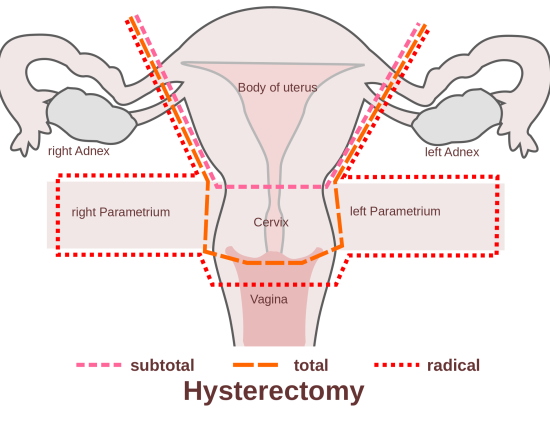The subject of STD testing can be difficult to broach. However, by talking about the issue of STDs, we can help prevent their transmission, as well as inspire others to get tested and seek treatment. And in the spirit of openness and honesty, I’ve decided to share my experience with a sexually transmitted disease. I hope my story will motivate others to talk about their experiences, as well as educate readers on the importance of testing and treatment.
It all started a few years ago. I was in my junior year of college, and, as much as I hate to admit it, I wasn’t always careful when it came to sexual health. I used condoms most of the time, but, other times, I let passion override good sense, and I ended up having unprotected sex a handful of times.
A few weeks after one of these incidents, I started to notice some uncomfortable, embarrassing symptoms. At first, I wrote the itching and burning off as a urinary tract infection; I drank some cranberry juice and hoped for the best. I didn’t get off that easy, though. The symptoms persisted and, after countless internet searches and a few conversations with girlfriends, I made an appointment with my gynecologist.
As it turned out, I had contracted gonorrhea. After the requisite exams, my doctor, who performs STD testing in and around San Francisco, prescribed some antibiotics, then sat me down for the inevitable lecture on safe sex practices. She also educated me on the complications associated with gonorrhea and other STDs, and I was shocked to learn that, without the proper treatment, I could have suffered effects like pelvic inflammatory disease, infertility and an increased risk of reproductive cancers. I was fortunate to have access to a clinic offering some of the most thorough and caring STD testing San Francisco offers.
Then and there, I vowed to always use my head when it came to sexual activity. I decided that–barring abstinence–I would use condoms every time, and I’d never be afraid to bring up the topic of STDs. I also decided to educate myself on the various diseases, and to share my knowledge as often as possible. Below, I’ve listed the most common types of sexually transmitted diseases and infections, and I’ve included information regarding the symptoms, treatments and complications of each. Keep reading to learn more about STDs, as well as your role in preventing their transmission.
Gonorrhea
Gonorrhea is a bacterial disease spread by sexual contact. In the United States, over 800,000 people contract gonorrhea each year; however, nearly half of these individuals go undiagnosed and untreated, therefore increasing the disease’s rate of transmission.
In women, symptoms of gonorrhea can be mild, and often go unnoticed. They include painful urination, itching and increased vaginal discharge. In men, when symptoms are present at all, they typically include painful urination and penile discharge.
Treatment for gonorrhea involves the use of antibiotic drugs. To prevent passing the disease back and forth, it’s important that both partners get tested and treated for gonorrhea.
Chlamydia
Like gonorrhea, chlamydia is one of the most common sexually transmitted diseases in the United States. In women, symptoms of this condition include vaginal discharge, pain during intercourse, painful urination and abdominal discomfort. In men, chlamydia typically produces symptoms like testicular pain and penile discharge.
Chlamydia is treated with antibiotics, and usually clears up within a couple weeks of receiving treatment. Failure to seek treatment for chlamydia can result in reproductive infections, infertility and an increased of cervical and testicular cancers.
HPV
HPV, or human papillomavirus, is a disease associated with the spread of genital warts and the development of cervical cancer. There are several different strains of HPV, each with its own set of symptoms and complications. HPV is extremely common, with an estimated 50% of sexually active people contracting it at some point in their lives.
There is no cure for HPV. However, treatments are available for warts and other symptoms, so talk to your doctor about your options.
Herpes
Herpes is a sexually transmitted viral infection characterized by sores on the genitals, mouth and/or anus, which are typically the only symptoms of the disease. In most cases, flareups of symptoms occur between periods of remission; however, it’s important to note that herpes can still be transmitted even when no symptoms are present.
While there is no known cure for the herpes virus, there are treatments available that may relieve symptoms, decrease the rate of transmission and prolong periods of remission.
Trichomoniasis
Trichomoniasis, or trich, is a parasitic genital infection, most commonly spread through sexual contact. According to the CDC, nearly four million people in the United States suffer from this disease. In men, trich typically produces no symptoms whatsoever; in women, common symptoms include painful urination, foul-smelling vaginal discharge, and itching in the genital area.
Without the proper treatment, trichomoniasis can result in an increased susceptibility of contracting HIV and other STDs. Thankfully, trich is easily treated through the use of antibiotics, which are usually administered in one powerful dose.
With the information provided here, you’re better informed as to the symptoms, treatments and complications associated with common STDs. In addition to the conditions listed here, there are other diseases passed through sexual contact, some of which, like HIV and AIDS, are life-threatening. Please let my story serve as a reminder to protect yourself from these and other sexually transmitted diseases and infections. Use condoms every time, and use them correctly. For added protection, get tested every year, or every time you’ve risked exposure to disease.






